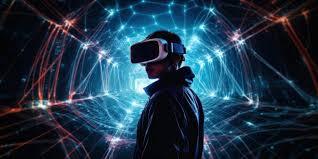Digital Reality refers to an umbrella term encompassing various immersive technologies that merge physical and digital worlds. This article delves into the concepts, applications, challenges, and future trends of Digital Reality (DR), emphasizing its transformative impact on industries, entertainment, education, and beyond.
Understanding Digital Reality
Digital Reality integrates three main categories of immersive technologies:
- Virtual Reality (VR): Immersive experience that simulates a realistic environment, often using head-mounted displays (HMDs) and motion-tracking sensors to create a fully virtual environment.
- Augmented Reality (AR): Overlays digital content onto the real world, typically viewed through smartphones, tablets, or AR glasses, enhancing real-world experiences with digital information.
- Mixed Reality (MR): Combines elements of VR and AR by merging digital and physical worlds, allowing virtual objects to interact with real-world environments and vice versa.
Applications of Digital Reality
- Gaming and Entertainment: Immersive VR gaming experiences, interactive AR games, and MR applications that blend virtual elements into real-world settings for enhanced entertainment.
- Training and Education: Simulated training environments in VR for medical, military, and industrial sectors, AR-enhanced educational tools for interactive learning experiences.
- Healthcare: VR therapy for pain management, surgical simulations, AR applications for medical training and visualization of patient data in real-time.
- Architecture and Design: Virtual walkthroughs of architectural designs, AR applications for visualizing interior design changes in real environments.
Benefits of Digital Reality
- Enhanced User Experience: Providing immersive, interactive, and personalized experiences that engage users and enhance learning, training, and entertainment.
- Improved Efficiency and Safety: Simulating hazardous environments for training without real-world risks, enhancing workplace safety and reducing training costs.
- Innovative Applications: Fostering creativity and innovation in industries like healthcare, education, and design by exploring new possibilities in immersive technologies.
Challenges in Digital Reality
- Hardware Limitations: High costs of VR/AR hardware, complexity of setup, and compatibility issues across different devices and platforms.
- Content Development: Creating high-quality, immersive content that leverages the full potential of VR, AR, and MR technologies requires specialized skills and resources.
- User Acceptance and Adoption: Overcoming barriers to widespread adoption, including concerns about privacy, comfort, and potential health effects of prolonged use.
Future Trends in Digital Reality
- 5G and Edge Computing: Enhancing VR/AR/MR experiences with low-latency, high-bandwidth 5G networks and edge computing for real-time rendering and interaction.
- Spatial Computing: Advancing MR capabilities with spatial mapping, object recognition, and gesture-based interactions for more intuitive user interfaces.
- AI and Machine Learning: Integrating AI for intelligent content creation, personalized experiences, and real-time analytics in digital reality applications.
- Blockchain for Digital Assets: Implementing blockchain technology to secure digital assets, verify ownership, and enable decentralized marketplaces for virtual goods and experiences.
Conclusion
Digital Reality represents a convergence of immersive technologies that are reshaping how we interact with digital information and experience virtual worlds. As industries continue to innovate and invest in VR, AR, and MR applications, addressing challenges, exploring new use cases, and embracing emerging technologies will be crucial for unlocking the full potential of Digital Reality. By enhancing user experiences, improving efficiency, and fostering creativity across various sectors, Digital Reality is poised to revolutionize entertainment, education, healthcare, and beyond, paving the way for a more connected and immersive future.
